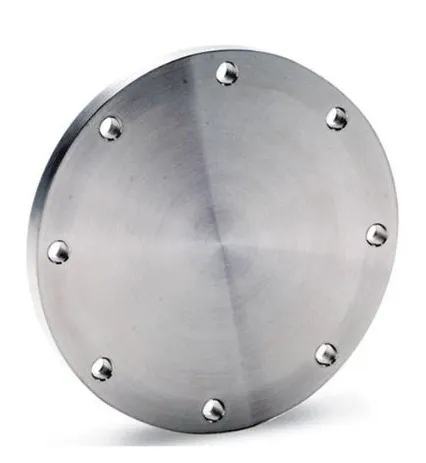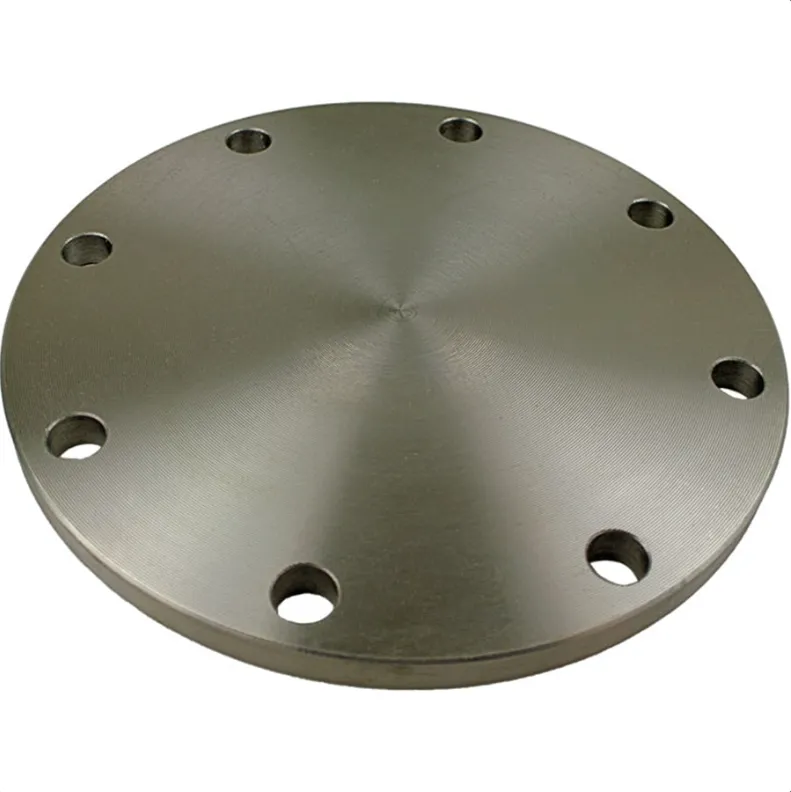General Introduction
Standard Compliance: AWWA C207 is a standard formulated by the American Water Works Association. CLASS B BLIND FLANGE complies with this standard.
Function: As a blind flange, its main function is to block the end of a pipe, providing a sealed end for the piping system. It is used to isolate a section of the pipeline, facilitating maintenance, repair, or when it is necessary to completely cut off the flow in a certain part of the system.
Design and Structure
Face Type: Usually has a flat face (FF). The flat face design provides a uniform surface for gasket placement and flange connection, ensuring good sealing performance when bolts are tightened.
Overall Structure: It is a circular plate without a central hole, with bolt holes evenly distributed around the circumference. These bolt holes are used to connect with other flanges or pipe ends using bolts and nuts, forming a sealed connection.
Dimensions and Specifications
Diameter: Ranges from 4" to 72".
Thickness: The minimum thickness varies with different pipe diameters. For example, the minimum thickness for NPS 4" is 0.625 inches, and for NPS 72", it is 3.353 inches.
Bolt Holes: The number and diameter of bolt holes also vary according to the pipe diameter. For instance, NPS 4" has 8 bolt holes with a bolt diameter of 0.625 inches, while NPS 72" has 60 bolt holes with a bolt diameter of 1.750 inches.
Pressure Ratings
Working Pressure: At water service temperature, the working pressure limit is 86 psi. The maximum pressure (test or transient) is 129 psi.
Materials
Usually made of carbon steel, which offers good strength and durability and can meet the requirements of general water supply and drainage piping systems. In some special environments, stainless steel or other alloy materials may also be used to enhance corrosion resistance and other properties.
Applications
Water Supply and Drainage Systems: Widely used in water treatment plants, water supply pipelines, and drainage systems. For example, it can be used to block the end of a pipeline during the construction or maintenance of a water supply network, or to isolate a certain section of the pipeline for repair or upgrade.
Related Industries: Also applied in industries related to water treatment and transportation, such as the power industry's cooling water systems and the chemical industry's water-based process systems.
-
Cangzhou Yulong Steel Co., Ltd.
-
Phone:
+86 13303177267 -
Email:
admin@ylsteelfittings.com
- English
- Arabic
- Italian
- Spanish
- Portuguese
- German
- kazakh
- Persian
- Greek
- French
- Russian
- Polish
- Thai
- Indonesian
- Vietnamese
- Zulu
- Korean
- Uzbek
- Hindi
- Serbian
- Malay
- Ukrainian
- Gujarati
- Haitian Creole
- hausa
- hawaiian
- Hebrew
- Miao
- Hungarian
- Icelandic
- igbo
- irish
- Japanese
- Javanese
- Kannada
- Khmer
- Rwandese
- Afrikaans
- Albanian
- Amharic
- Armenian
- Azerbaijani
- Basque
- Belarusian
- Bengali
- Bosnian
- Bulgarian
- Catalan
- Cebuano
- China
- China (Taiwan)
- Corsican
- Croatian
- Czech
- Danish
- Esperanto
- Estonian
- Finnish
- Frisian
- Galician
- Georgian
- Kurdish
- Kyrgyz
- Lao
- Latin
- Latvian
- Lithuanian
- Luxembourgish
- Macedonian
- Malgashi
- Malayalam
- Maltese
- Maori
- Marathi
- Mongolian
- Myanmar
- Nepali
- Norwegian
- Norwegian
- Occitan
- Pashto
- Dutch
- Punjabi
- Romanian
- Samoan
- Scottish Gaelic
- Sesotho
- Shona
- Sindhi
- Sinhala
- Slovak
- Slovenian
- Somali
- Sundanese
- Swahili
- Swedish
- Tagalog
- Tajik
- Tamil
- Tatar
- Telugu
- Turkish
- Turkmen
- Urdu
- Uighur
- Welsh
- Bantu
- Yiddish
- Yoruba

Write your message here and send it to us
Related News
-
Jul . 23, 2025Space-Saving Connection Mastery: How 1/2 Pipe Nipple’s 50mm Short Design Solves Dense Piping Installation Challenges?In the labyrinth of industrial machinery, where pipes weave through 200mm-wide gaps and every millimeter counts, the battle against cramped spaces often stalls projects.
-
Jul . 23, 2025Shale Gas Extraction Impact Resistance: How ASME B16.47 Flange's Hub-Thickened Design Passes Seismic Testing?In the high-stakes realm of shale gas extraction, where seismic activity and operational vibrations threaten pipeline integrity, the ASME B16.47 flange emerges as a critical safeguard.















